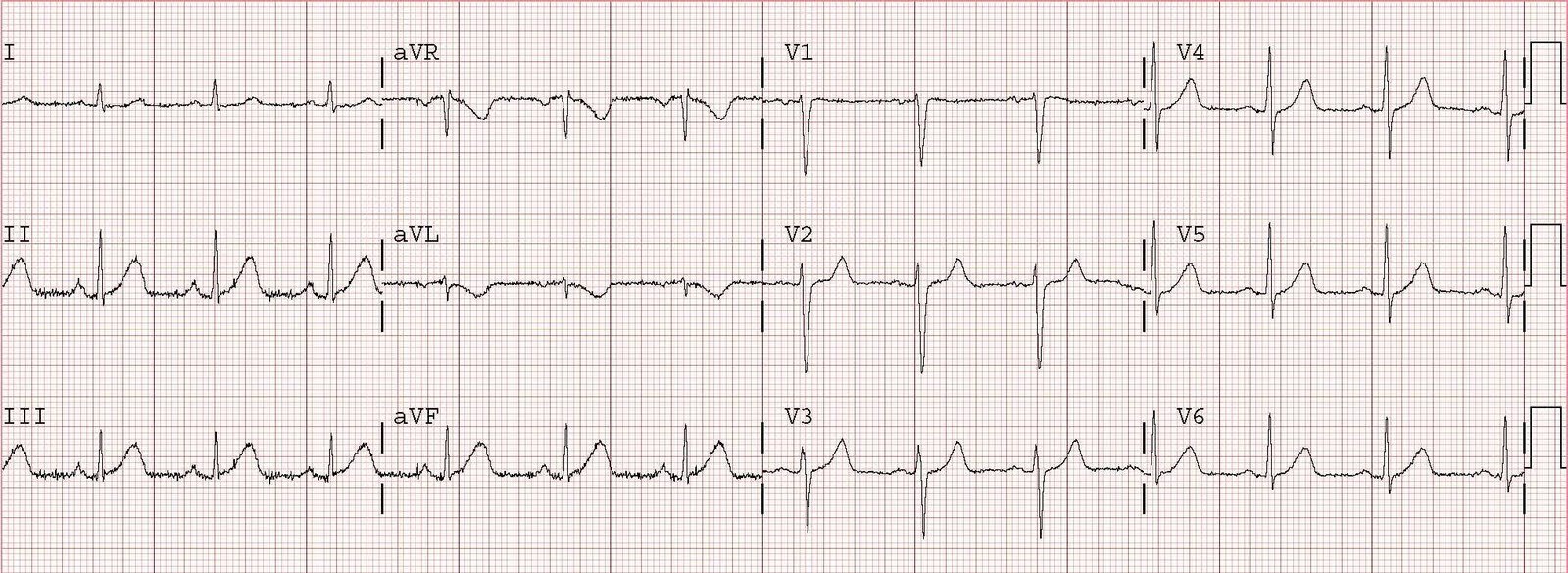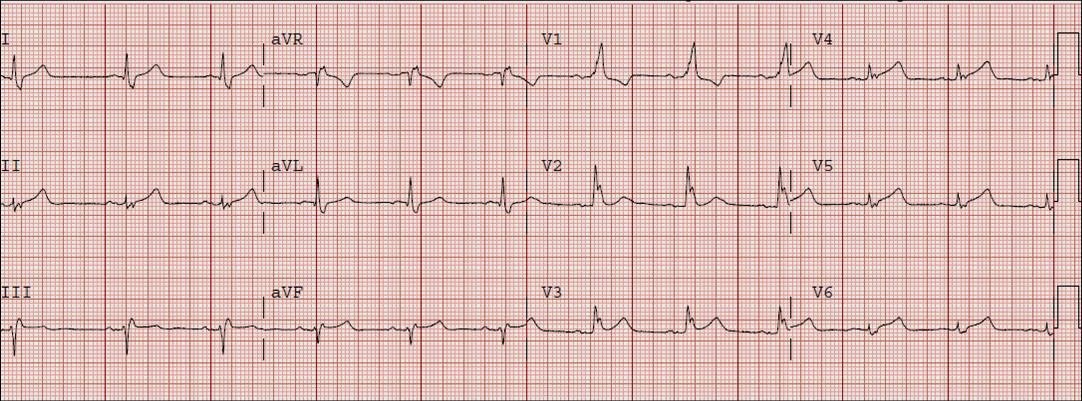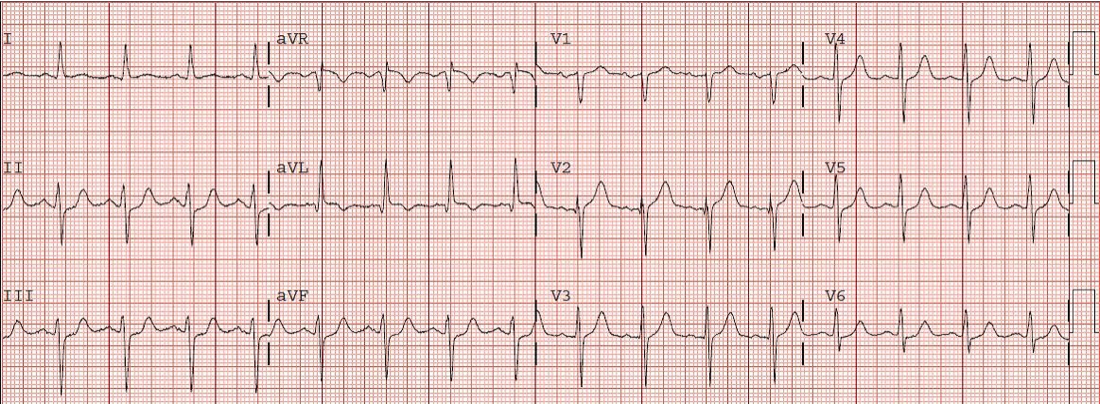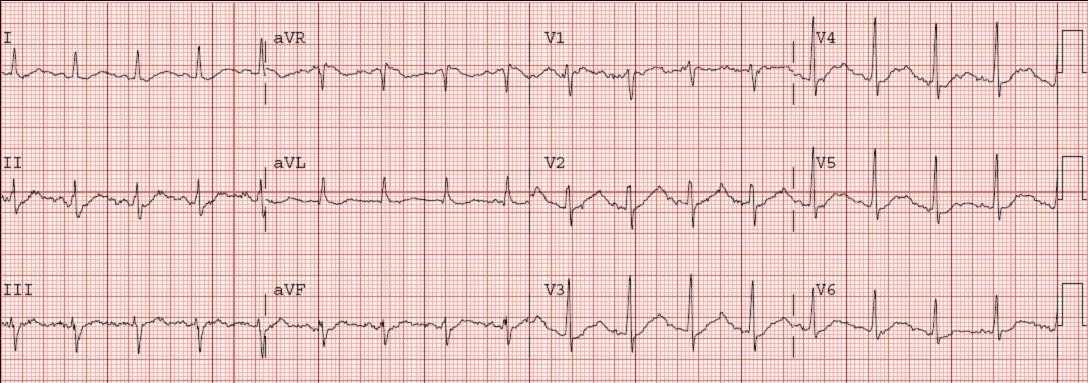A 53 year old male with no previous cardiac history presented with sudden substernal chest pain with tingling of bilateral arms and dyspnea.
this is the first ECG at 1559:
 There is very subtle and < 1 mm ST elevation in II, III, and aVF. The T-waves in these inferior leads are much larger than normal, with almost the same voltage as the QRS, and are “fat”. These are hyperacute T waves. Just as importantly, there is minimal reciprocal ST depression in aVL, with T wave inversion. This is diagnostic for inferior STEMI, even though it doesn’t meet the arbitrary criteria of 1 mm ST elevation in 2 consecutive leads. The cath lab was activated and a distal RCA thrombus with TIMI-0 flow was seen. For technical reasons, it could not be opened. An ECG was repeated, showing the development of the inferior MI without reperfusion:
There is very subtle and < 1 mm ST elevation in II, III, and aVF. The T-waves in these inferior leads are much larger than normal, with almost the same voltage as the QRS, and are “fat”. These are hyperacute T waves. Just as importantly, there is minimal reciprocal ST depression in aVL, with T wave inversion. This is diagnostic for inferior STEMI, even though it doesn’t meet the arbitrary criteria of 1 mm ST elevation in 2 consecutive leads. The cath lab was activated and a distal RCA thrombus with TIMI-0 flow was seen. For technical reasons, it could not be opened. An ECG was repeated, showing the development of the inferior MI without reperfusion: 




THANKS FOR THIS POST
It has been really helpful.Should this patient be thrombolysed if facilties for cardiac intervention are not available ?
I would, because I would be very sure of the diagnosis. But you must be certain of the diagnosis in order to give fibrinolytics. But if you're not certain, you can: get serial ECGs (they will evolve if it is early occlusion) and/or get an immediate echocardiogram.
On the second ECG there is some ST depression in V1-V3 and a little bit of ST elevation in V5-V6. I guess it must have been a very big RCA.
Yes, indeed. An infero-postero-lateral STEMI!